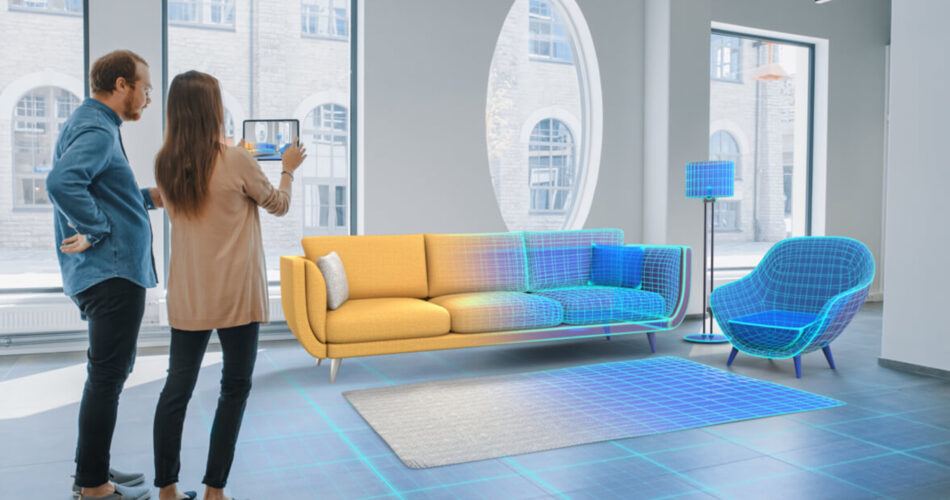Interior design is evolving faster than ever, and technology is at the heart of this transformation. From smart home devices to augmented reality tools, technology is revolutionizing the way we approach decorating and designing our living spaces. The fusion of creativity and innovation is allowing designers—and homeowners alike—to push boundaries and create more functional, personalized, and visually stunning interiors. In this post, we’ll explore how technology is shaping the future of interior design, from virtual design tools to smart furniture and beyond.
1. Virtual and Augmented Reality for Design Visualization
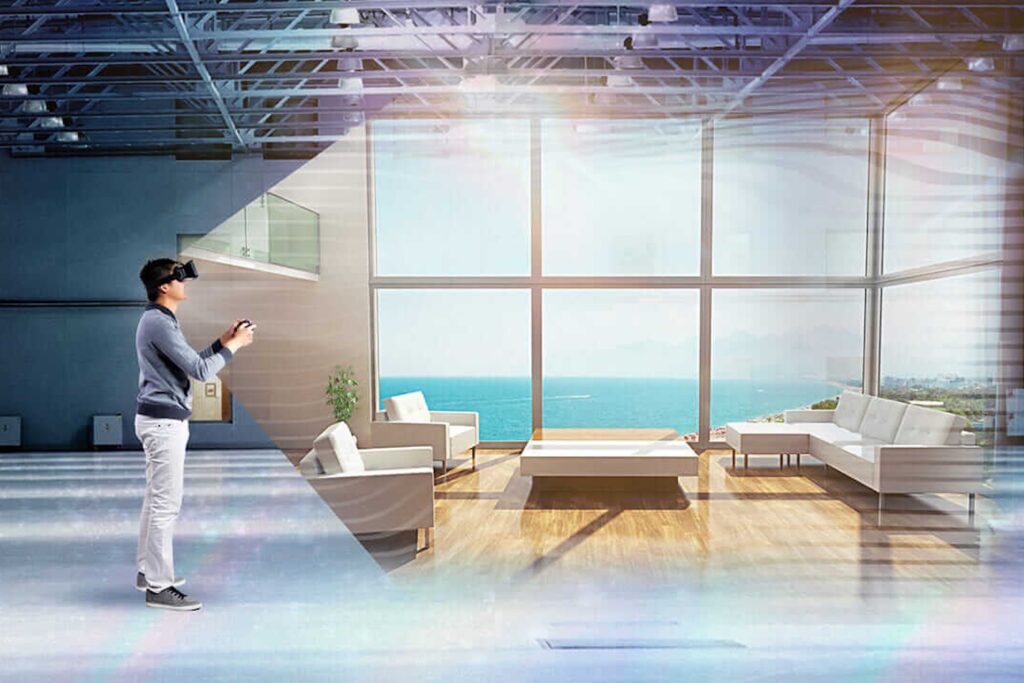
Virtual Reality (VR) and Augmented Reality (AR) are game-changers in the world of interior design. These technologies allow designers and homeowners to experience a space before making any physical changes, providing a more immersive and accurate way to visualize design choices.
- Augmented Reality: AR apps allow you to “try” furniture or decor in your own space before purchasing. Simply point your smartphone or tablet at an area in your home, and the app will superimpose virtual furniture or accessories into the scene. This helps avoid the frustration of buying pieces that don’t fit, both physically and stylistically.
- Virtual Reality: VR is taking this a step further by enabling fully immersive tours of 3D-rendered rooms. Whether you’re working with a designer or doing it yourself, you can walk through a virtual version of your space to assess the layout, design elements, and flow before any physical work begins.
- Why It Matters: These technologies give homeowners and designers the ability to make more informed decisions, preventing costly mistakes and allowing for faster, more efficient design processes.
2. Smart Furniture and Home Automation
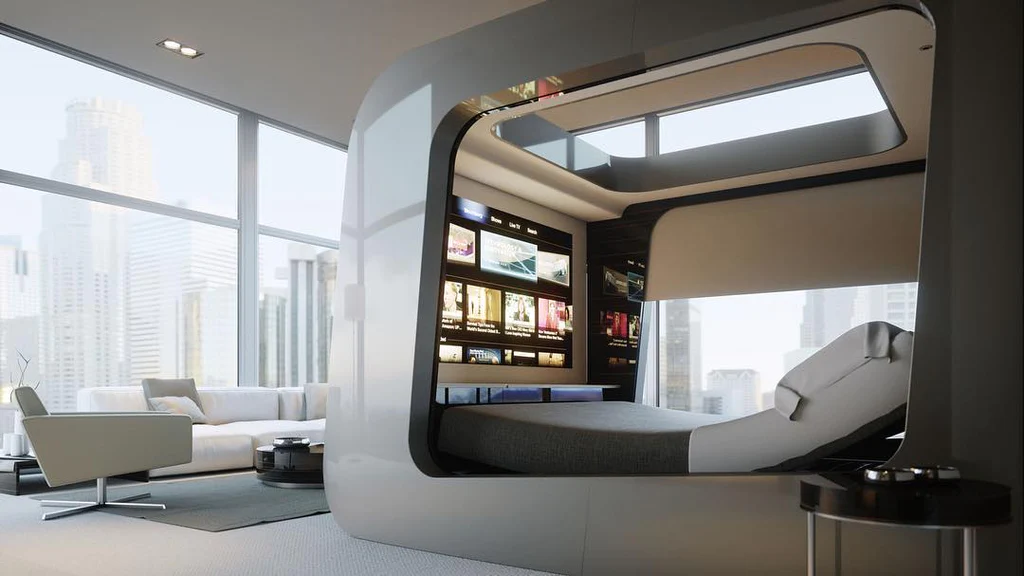
Smart furniture is one of the most exciting developments in modern interior design. Thanks to the Internet of Things (IoT), furniture can now adapt to your needs and even respond to your behavior.
- Smart Tables and Desks: Furniture pieces such as coffee tables and desks now come equipped with built-in charging ports, wireless charging pads, and even speakers. Some smart desks are adjustable, allowing you to switch between sitting and standing positions with just the press of a button, promoting better health and productivity.
- Sofa with Built-In Technology: Imagine a sofa that not only provides comfort but also integrates features like USB charging ports, Bluetooth speakers, and even adjustable positions for sitting or lying down. These functional designs blend seamlessly into your space, providing both comfort and connectivity.
- Smart Lighting: Lighting systems like Philips Hue or LIFX allow you to adjust your lights remotely using a smartphone or voice commands. Smart bulbs can change color, dim, and even simulate natural daylight, helping to create the perfect ambiance for every room and mood.
- Why It Matters: Smart furniture and home automation bring both convenience and efficiency to home design, making your living space more functional and enjoyable. These innovations also contribute to better sustainability by promoting energy-efficient features.
3. 3D Printing in Interior Design
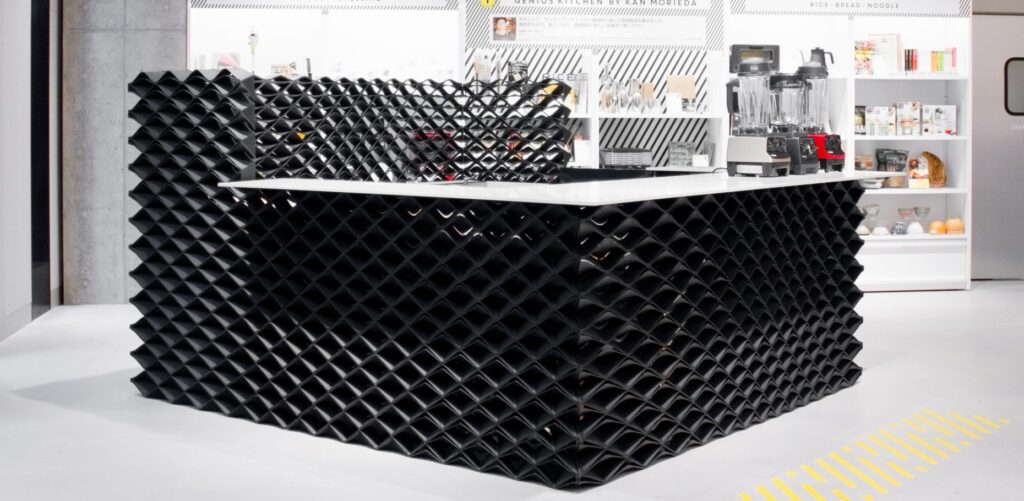
3D printing is not just for tech enthusiasts or engineers—it’s making waves in the world of interior design too. This technology allows designers to create highly customized furniture, décor, and even architectural elements that wouldn’t be possible with traditional manufacturing methods.
- Customized Furniture: 3D printing enables the creation of unique, one-of-a-kind furniture pieces. Designers can print chairs, tables, and lighting fixtures tailored to exact specifications, allowing for unparalleled personalization.
- Home Decor Items: From sculptures to light fixtures, 3D printing can produce intricate décor pieces that fit any design style. The material possibilities are vast, ranging from plastics and metals to more sustainable, eco-friendly materials like recycled plastics.
- Architectural Details: 3D printing can also be used for architectural elements like wall panels, room dividers, and even customized flooring, all of which allow for more innovative and creative designs.
- Why It Matters: The use of 3D printing in interior design offers boundless opportunities for creativity and customization. It also allows for more sustainable design practices by reducing material waste and enabling the use of recycled materials.
4. AI-Powered Design Tools
Artificial Intelligence (AI) is making its way into interior design software, offering homeowners and designers powerful tools to streamline the design process.
- Personalized Design Suggestions: AI-powered apps and software can analyze your preferences and recommend furniture, color palettes, and layouts based on your style, room dimensions, and functionality needs. This takes the guesswork out of choosing the right design elements for your space.
- Space Planning and Layout Optimization: AI can generate multiple layout options for a room based on factors like traffic flow, furniture arrangement, and functionality. These tools can optimize the use of space, ensuring that your room is both practical and aesthetically pleasing.
- Smart Virtual Assistants: Many AI tools now integrate with smart home assistants like Amazon Alexa and Google Assistant, enabling voice-controlled design decisions. For example, you can use voice commands to adjust lighting, control window blinds, or change the thermostat, all contributing to a more integrated and personalized living experience.
- Why It Matters: AI-powered design tools simplify the decision-making process, saving time and ensuring that you get the best possible design outcome for your space. These tools also make professional-level design more accessible to homeowners without a background in interior design.
5. Sustainable Technology in Interior Design
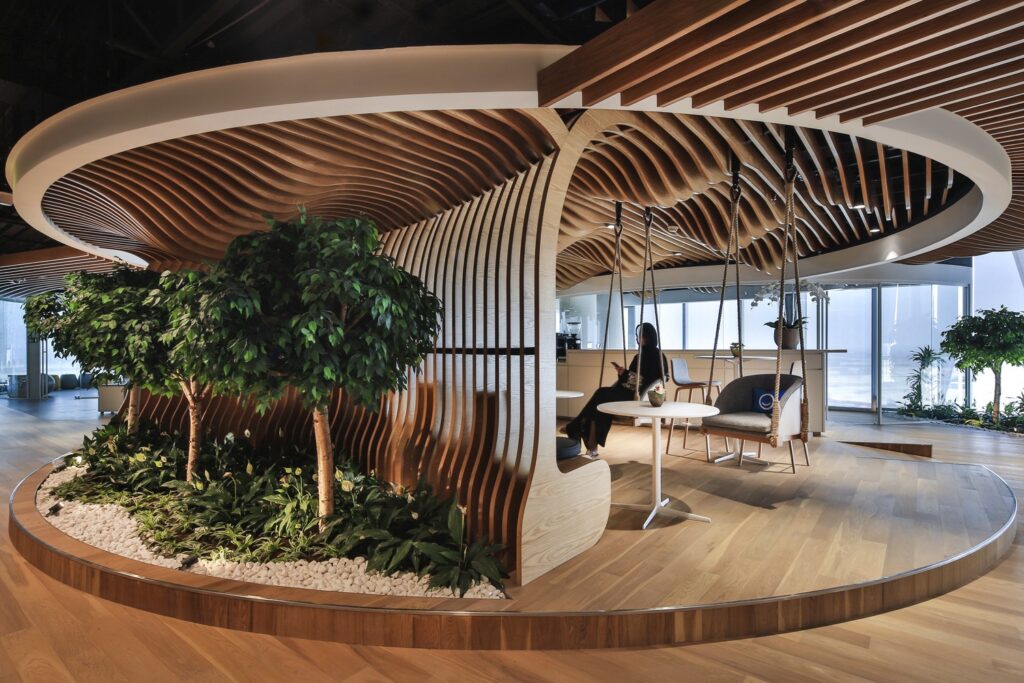
As sustainability becomes more of a priority, technology is stepping in to help create more eco-friendly living spaces. From energy-efficient appliances to sustainable building materials, technology is enabling designers to create greener, more environmentally responsible interiors.
- Energy-Efficient Systems: Smart thermostats, energy-efficient appliances, and intelligent lighting systems can dramatically reduce a home’s energy consumption. These systems can be programmed to adjust based on your lifestyle, ensuring that energy is used efficiently and only when needed.
- Sustainable Materials: Advances in technology have led to the development of eco-friendly materials that are both durable and sustainable. For example, bio-based materials, recycled fabrics, and natural stone alternatives are now widely available for use in furniture, flooring, and décor.
- Smart Water Management: Water-saving technologies, such as smart irrigation systems or low-flow faucets and showerheads, contribute to the sustainable design of interiors and can help reduce water waste.
- Why It Matters: Sustainable design is not only better for the environment, but it can also lead to long-term savings by reducing energy and water bills. Technology is enabling homeowners to design eco-friendly interiors without sacrificing style or comfort.
6. Customizable and Modular Design
Modular and customizable designs have become increasingly popular, especially in smaller spaces where flexibility is key. With the help of technology, it’s now easier than ever to design and personalize modular furniture to fit your exact needs.
- Modular Sofas and Storage Units: Modular sofas and shelving units can be configured in various ways to fit your space and style. With tech-enabled pieces, such as sofas with built-in charging ports or couches that turn into beds, you can enjoy customizable comfort and functionality.
- Smart Modular Walls: In the future, modular walls that can be adjusted to change the size of a room will become more common. These movable walls, paired with smart technologies, could allow homeowners to create multifunctional spaces that adapt to their needs.
- Why It Matters: Customizable and modular design offers greater flexibility and allows spaces to evolve with changing needs, whether for growing families or changing lifestyles. Technology is making this adaptability easier and more accessible.
Conclusion
The future of interior design is all about embracing the possibilities that technology offers. From virtual reality and smart furniture to AI-powered tools and sustainable materials, technology is transforming how we decorate and design our homes. These innovations not only help us create more functional, personalized, and efficient spaces but also make interior design more accessible and sustainable than ever before. As these technologies continue to evolve, we can expect to see even more exciting advancements in the way we design our living environments, making the homes of tomorrow smarter, greener, and more beautiful.

